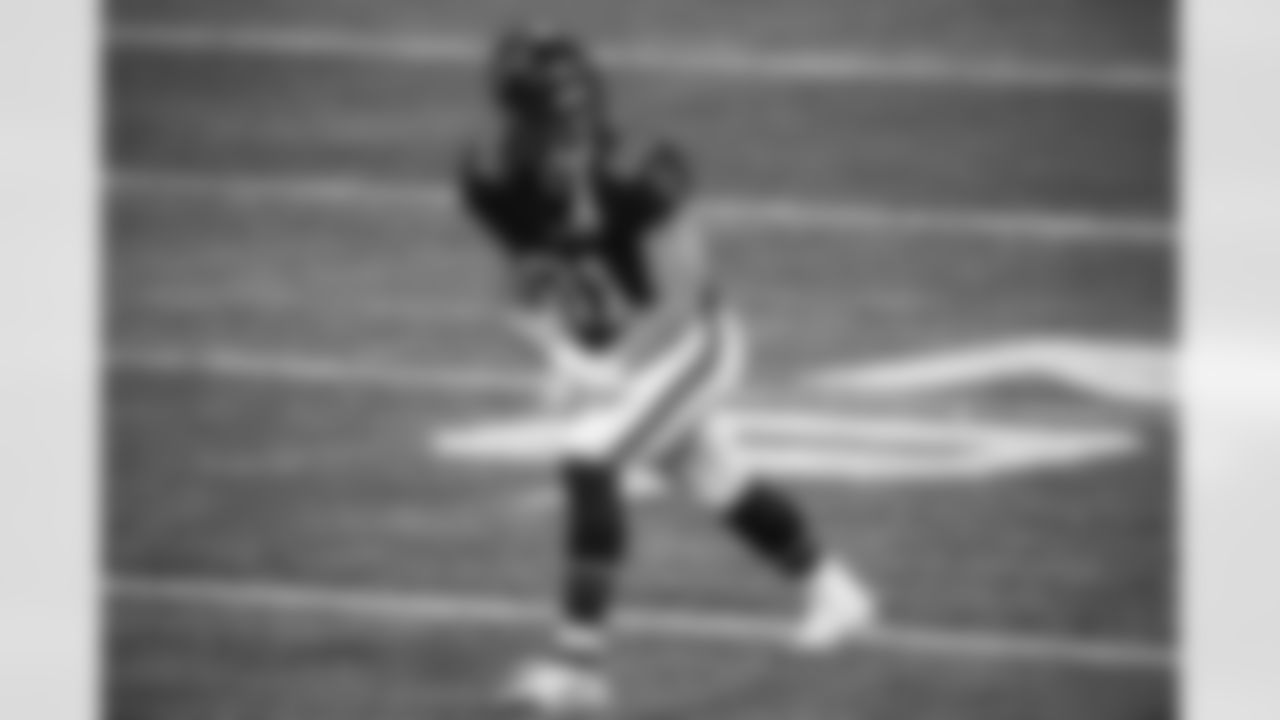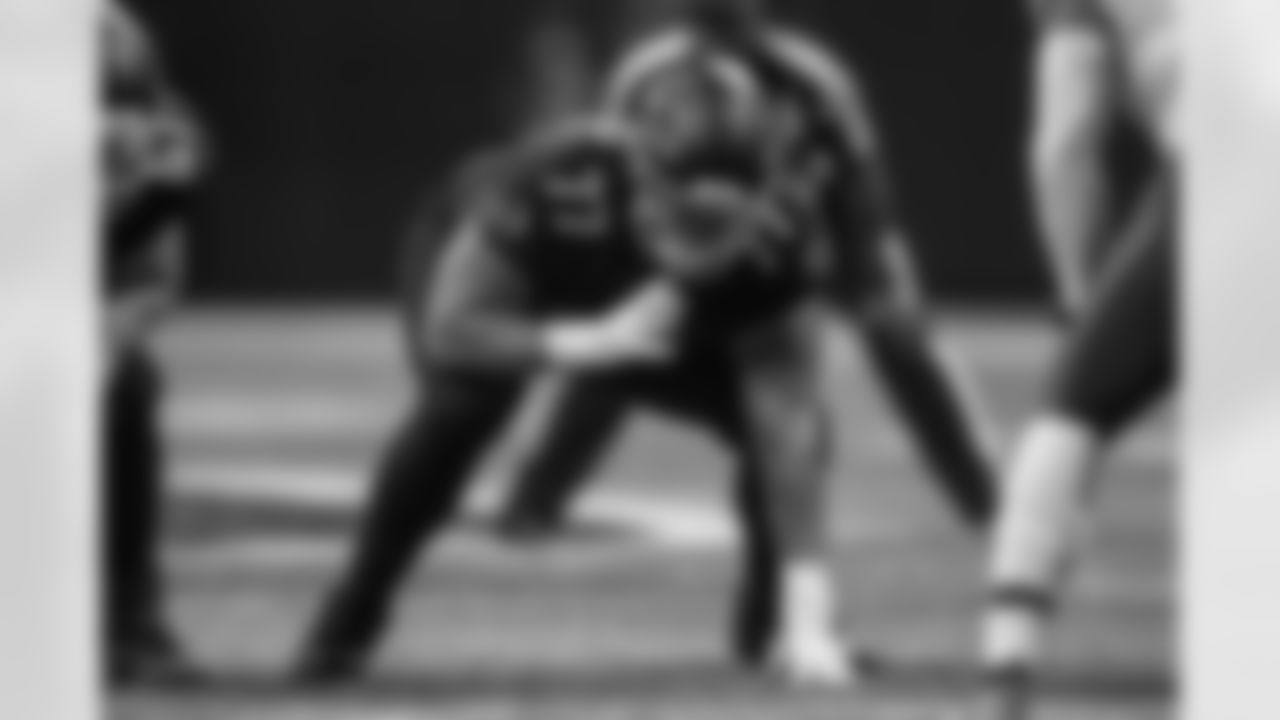The Giants and Falcons are both trying to win their first games of the season on Sunday when the teams play at 1PM at MetLife Stadium.
1. The Falcons' defense is allowing 40 points per game this season (worst in the NFL), but their actual performance has not been as poor as that lone number might indicate. They are 21st in yards allowed per game (387.5) and 23rd in yards allowed per play (6.1). They also had to face Tom Brady and the Buccaneers in Week 2.
The points allowed statistic is skewed because of the Falcons' poor red zone defense. Opponents have scored touchdowns on 87.5% of their red zone trips against the Falcons this season, which is the sixth-highest rate in the NFL. The defense has also been put in some bad situations by the offense and special teams. Opponents have scored five touchdowns on drives of 50 or fewer yards, which includes three of 32 or fewer yards.
The run defense has been a weakness, allowed 127.5 yards per game (24th in the NFL) and 4.9 yards per rush play (27th). Those numbers, however, are skewed by the success Jalen Hurts had as a runner in Week 1 when he ran it seven times for 62 yards. If all quarterback rushing totals are taken out of the equation, the Falcons have allowed 191 yards on 41 carries, which is a much more reasonable 4.65 yards per carry.
It will be interesting to watch how the Giants might attack the Atlanta defense with Daniel Jones, given the success Jalen Hurts had running the read-option against them in the first week of the season.
2. Veteran defensive coordinator Dean Pees arrived this offseason with new head coach Arthur Smith . Other than Grady Jarrett, Dante Fowler Jr. and Deion Jones, the defense is not filled with notable names. They do have some interesting younger players like defensive lineman Marlon Davidson, cornerbacks AJ Terrell and Isaiah Oliver, and safety Richie Grant.
The Falcons run a very heavy "Cover 2" scheme (49% of their snaps), though they try to disguise what they are doing with a lot of shifting from their safeties right before and after the snap. According to Pro Football Focus, no one has run Cover 2 on a higher percentage of their snaps than the Falcons have this season. They have run Cover 1 or Cover 0 on a quarter of their snaps and Cover 3 on 20% of their snaps.
The Falcons only blitz 25.3% of the time according to PFF, but they send their slot corner more frequently than every team in the league but one. One blitz they used in both games featured two linebackers lined up standing over the center. At the snap both those players bail into coverage with a cornerback coming off the edge. They also like to blitz Deion Jones on a slight delay form the linebacker level.
Fowler and Jarrett are the team's two best individual pass rushers. PFF has tracked Fowler with a sack, quarterback hit and three hurries. Fowler plays on the right side of the defense over the left tackle slightly more than he does on the left side of the defense. Jarrett splits his time evenly between left and right defensive tackle and has three hurries this season, but has not gotten to the quarterback yet. They have four sacks this season and sport PFF's lowest pressure rate in the league at just 26.5%. They run stunts up front 20% of the time (22nd-highest rate in the league) to try to create confusion up-front to get to the quarterback.
The Falcons play their nickel defense nearly 70% of the time. Oliver is their primary slot cornerback with Terrell and Fabian Moureau outside. Terrell has been their most effective cornerback this year, allowing only three catches on eight targets for 30 yards. He has made a couple of leaping plays on the football dropping back into the Cover 2 hole between the cornerback and deep safety. Terrell missed practice with a concussion on Wednesday and Russell Gage missed practice with an ankle injury.
View photos of the Atlanta Falcons starters ahead of the Week 3 matchup against the Giants.


HC Arthur Smith

OC Dave Ragone

DC Dean Pees

STC Marquice Williams

QB Matt Ryan

RB Mike Davis

WR Calvin Ridley

WR Russell Gage

TE Kyle Pitts

TE Hayden Hurst

LT Jake Matthews

LG Jalen Mayfield

C Matt Hennessy

RG Chris Lindstrom

RT Kaleb McGary

DL Grady Jarrett

DL Tyeler Davison

DL Jonathan Bullard

OLB Steven Means

LB Deion Jones

LB Foyesade Oluokun

OLB Dante Fowler Jr.

CB A.J. Terrell

S Erik Harris

S Duron Harmon

CB Fabian Moreau

K Younghoe Koo

P Cameron Nizialek

LS Josh Harris

H Cameron Nziaklek

PR Avery Williams

KR Cordarrelle Patterson
3. The Falcons' offense is not the wide-open, spread-the-field, throw-it-all-over-the-place unit fans remember from years past. Head coach Arthur Smith (also the offensive play-caller) and offensive coordinator Dave Ragone brings a run and play-action based attack to Atlanta. On first downs in the first half of games, the Falcons run the ball 42.4% of the time, which is the 11th-highest rate in the league.
The Falcons favor heavier personnel. They are in three wide receivers only 36.4% of the time. They are either in dual tight ends, dual running backs or both (12, 21, or 22 personnel) 54% of the time. The Falcons used play action on 29.5% of their pass plays in Week 1 against Philadelphia but that dropped to 19.2% in Week 2 versus Tamp Bay.
Mike Davis is the team's primary running back and yields some snaps to Cordarrelle Patterson. Davis has 87 rushing yards with more than two-thirds coming after contact. He also has reliable hands with 11 catches on 15 targets for 69 yards.
4. It is difficult to discern the Falcons' true personnel groups because of the versatility of tight end Kyle Pitts and utility man Cordarrelle Patterson. Patterson has 14 rushes along with seven receptions. He has lined up in the backfield 34 times, in the slot five times, as a wide receiver nine times, and in-line three times. They get him the ball on traditional hand-offs, screens, swing passes, wheel routes, and slants. He is dynamic with the ball and has the strength, power and speed to make a big play every time he touches the ball.
The game every NFL defense will be playing before every snap is "Where is Kyle Pitts?" He has been used as a traditional tight end and a wide receiver, depending on the formation. Pitts has been lined up in-line 35 times, in the slot 47 times and wide 28 times. Surprisingly, he has only been on the field for 73.6% of the Falcons offensive snaps. He has only been targeted more than 10 yards down the field three times (all completions) and he hasn't been targeted once more than 20 yards down the field. At 6'6 and 240 pounds with 4.44 speed, Pitts has the speed to blow by linebackers and safeties and the size to outmuscle cornerbacks on contested catches. He had five catches for 73 yards last week but the 4th overall pick has not had his breakout performance yet.
5. The Falcons' offense has not pushed the ball downfield much this season. Matt Ryan's 5.1 yards average depth of target is the second-lowest in the NFL amongst quarterbacks with at least 25 dropbacks. Ryan is just 7-of-10 on passes that travel 10-19 yards downfield, and has only attempted three passes this season that have traveled 20 or more yards in the air. All three have been incomplete and have been targeted to Calvin Ridley. Ryan will dink-and-dunk opponents if the defense lets him.
Ridley is the team's top wide receiver. He has played 84% of the team's offensive snaps and has 12 catches for 114 yards and a touchdown. Hayden Hurst is the team's primary in-line tight end and has played just over 50% of the snaps. Russell Gage and Olamide Zaccheaus are the team's second and third wide receivers.
Ryan has been getting rid of the ball quickly with the eighth-quickest average time to throw in the league (2.54 seconds). Despite getting rid of the ball on time, Ryan has still faced pressure the ninth-most frequently in the NFL. Left tackle Jake Matthews and right guard Chris Lindstrom are top-line offensive linemen, but teams have been able to apply pressure at other spots.
Rookie Jaylen Mayfield is playing left guard after being a tackle at Michigan. Pro Football Focus has tracked him allowing two sacks, four quarterback hits, and six hurries this season. Second year center Matt Hennessy has allowed one sack and four hurries. Right tackle Kaleb McGarry is a massive human being at 6'8 and 324 pounds, but speed rushers have managed a sack, two quarterback hits and five hurries so far this season.


Limited Tickets Available for Eli Manning Ceremony
Limited tickets are available for Eli Manning's jersey retirement and Ring of Honor induction game















